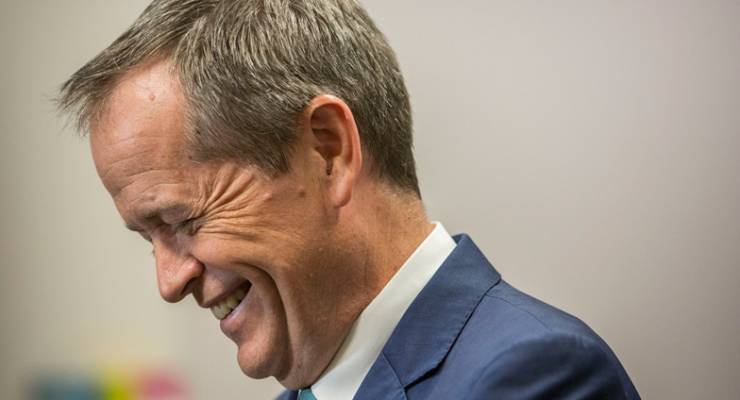
Labor has taken an election-winning lead after the first week of the unofficial election campaign and leads the government 52%-48% on a two-party preferred basis, today’s Essential Report shows.
Labor’s primary vote has risen over two percentage points to 39%, while the Coalition’s vote is down two points to 42%, while the Greens have dropped a point to 10%. The result is the first time Labor has taken a two-party preferred lead since Malcolm Turnbull became prime minister, and comes after a shambolic start to the government’s campaign, marked by confusion over the election date, a desperate effort to head off Labor’s call for a banking royal commission and another leak, this time about budget advertising.
The government’s election strategy has focused so far on first shoring up its defences against Labor on banks, manufacturing in South Australia and multinational taxation, so that it can switch the focus, as it did over the weekend, to a scare campaign on negative gearing and Labor’s union links. Its aim will be to hold off Labor on its weak points and then slowly strengthen its primary vote between now and July 2 off the back of a more aggressive campaign.
Non-Coalition voters are also hardening against the double dissolution election to which the government is now committed, with Labor voters opposing it 38%-32% and Greens voters opposing it 45%-38%. That’s compared to Coalition voters, who back it 62%-15%. That may reflect expectations about the result — and this is where it gets more complex for the Coalition. The Coalition is expected to win by 42% of voters, while Labor is expected to win by just 28%. While there’s a strong element of partisanship in the responses, Coalition voters are much more confident that their side will win than Labor voters.

However, the view that the government will win, if it holds until election day, might end up helping Labor by encouraging voters to believe they can lodge a protest vote against the government.
The extent of disillusionment with Malcolm Turnbull also emerges on the question of whether his elevation to the prime ministership has made voters more likely to vote for the Coalition. After his ascension in September last year, 34% of voters said he made them more likely to vote for the Coalition, while just 14% said he made it less likely. Now, 23% of voters say he has made it less likely they will vote for the Coalition. That includes Coalition voters (14%, compared to 7% in September) and Labor voters (31%, compared to 16% in September). Only Greens voters now say they’re more likely to vote for the Coalition because of Turnbull compared to September, although that’s a small sample size.
The government also appears to have a problem with how it wants to frame the election campaign. While it has succeeded in drawing voters’ attention to what it calls “union corruption” as a key anti-Labor weapon, voters see corruption elsewhere as a problem as well: 36% believe there is “widespread corruption” in the building industry and 35% in unions, but 40% say there is corruption in politics (a perception not helped by the NSW Liberal Party’s use of the Free Enterprise Foundation to hide illegal donations) and 34% say there is corruption in large corporations.

The government also has its work cut out for it on negative gearing, with voters saying they would support moves to limit negative gearing in the budget 48%-24%, while its rumoured plans to cut corporate tax are strongly opposed, with 57% opposition and just 22% support. Cuts to personal income tax, however, are backed 63% to 19%, and reductions in superannuation tax concessions for high earners are supported 60% to 22%.








Perfect scenario for Labor: Public expects Coalition to win while they switch to Labor
On most of the major policy issues confronting both sides, Labor is on the side of the electorate, and should be able to pursue that right up to election day.
I’m going to look at the election odds!
wow
Labor continue to present policies that tackle some of the big issues. Agreed they may be populist, but so what. They’re populist because they matter to voters, why would you not speak to the issues that ppl are telling you matter to them, their families & communities
Agree. Liberal have been too narrow in their focus on unions and innovation (which most people don’t understand). Liberal should hope that the Budget delivers the big picture to take to the election. Otherwise, they’re in deep trouble.
Also, the Arthur Sinodinos bomb hasn’t gone off yet.
I’m with Puff….WOW!!
Labor are just beginning to show how much hard work has been done by all of their politicians…in researching and formulating good policy.
Keep it up everyone in the ALP…can’t wait for July 2nd!!!